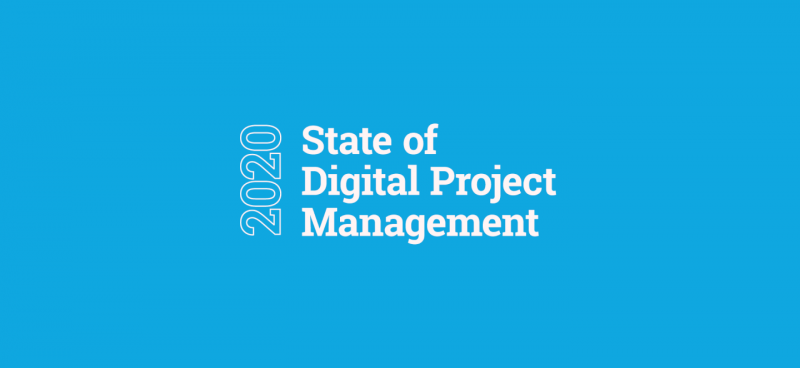Welcome!
This year, I started a census for Digital Project Managers (DPMs) to get a clearer picture of what the role looks like across the field. I want to know all about my fellow DPMs — where in the world they are, what types of organizations they are working for, what their job titles and responsibilities are, how much money they’re making, and what their challenges and pain points are.
All this is in service of analyzing trends and seeking out patterns that are permeating the field and the profession, in order to keep DPMs and their teams in the loop on insights and knowledge that will help them and their projects succeed.
So far, what I can say is that the future of project management — and work in general — is already here. Trends that have long been heralded as the next big thing, like AI, automation, big data, analytics, and all the other trendy buzzwords, are already here and impacting what project managers do.
In this first year of conducting this census, we received almost 400 responses from digital project managers in 60 different countries. The responses provide a wealth of data that the DPM team has analyzed and used to extrapolate insights for this report. While the limited data can’t account for every single DPM’s unique project or situation, we are able to make some general statements about the field and the role of DPMs within their organizations.
Here’s the main highlights and trends we noticed this year:
- Automation Lets Project Managers Provide More Value
- Offloading Decision-Making to Artificial Intelligence
- More Bigger, Better Data
In this article
- Automation Lets Project Managers Provide More Value
- Offloading Decision-Making To Artificial Intelligence
- More Bigger, Better Data
- State Of The Digital Project Manager Community
- About Our Respondents
- Conclusion
Automation Lets Project Managers Provide More Value
It’s clear that automation will — and has already started to — make a big impact on organizations, project management, and individual projects. Project managers are under more pressure than ever to find ways to save time, get more done, and add more value to their projects. Automation provides opportunities for these improvements, as well as added efficiency among project team members.
According to data from 2019, 41% of organizations are currently using automation in a multi-functional capacity or at a large scale. And the technology market is growing to keep up, at 20% per year. It’s hard to find project management tools or software without at least some degree of automation, but there are also countless tools solely dedicated to automating tasks.
In our 2020 DPM census, one response to our question “What’s the most impactful thing we could do to help you on your DPM journey?” reflected this. The response noted that the most impactful thing for them would be
“Automation. How we can automate our day-to-day [digital project management] work and use the extra time for additional value on the projects and clients.”
This respondent isn’t the only one to notice the connection between automation and freeing up time to add more value. According to Deloitte, automation can take care of repetitive and manual tasks while leaving work for human workers that is “more interpretive and service-oriented, involving problem-solving, data interpretation, communications and listening, customer service and empathy, and teamwork and collaboration.”
In fact, 47% of companies are already using automation to supplement their existing tasks and increase team member productivity. But it seems like while project managers are usually well-versed in automating email reminders about upcoming meetings or deadline notifications, there is still some confusion about the role of technology and the role of the project manager.
Our survey also asked respondents about their biggest challenges in project management. Several responses noted challenges with tools and technology in the digital space. One respondent in particular noted that they weren’t always sure “what tools to use for the size & complexity of the project” and another stated they weren’t always sure “how much “traditional” methods apply to the digital world.”
While these responses speak more generally about tools and technology, the sentiment applies to automation. What should be automated and when? How does automation apply to traditional projects and approaches?
These questions remain unanswered for now, but automation seems to be trending towards automating as many repetitive and manual tasks as possible. 62% of organizations believe that automation (specifically robotic process automation) will have a moderate to high significance in their future projects.
This will allow project managers to spend more time planning projects, creating in-depth status reports, and creatively strategizing about project completion.
On top of automation, experts expect that intelligent automation will also play an increased role in project management and project completion. The combination of automation and artificial intelligence will further a project manager’s ability to complete and add value to projects.
Offloading Decision-Making to Artificial Intelligence
There is often confusion about the differences between automation and artificial intelligence (AI). Automation involves robots or computer programs running repetitive, simple tasks, without making any decisions or needing to understand any logic.
AI, however, does involve computers making decisions and understanding logic. There are also many subcategories of AI — including knowledge-based AI, machine learning, decision management, and more. More on this later.
As mentioned in the previous section, the combination of automation and AI can be referred to as intelligent automation. This means that technology could take over more than just the repetitive, manual tasks that project managers sometimes dread. It also might pitch in with things like allocating resources, prioritizing risks, or estimating the amount of time needed for certain tasks.
But AI can also go further than that. The subcategories of AI mentioned above — knowledge-based, machine learning, and decision management — are all based around supplementing human decision-making. Project managers make a lot of decisions. Some are critical to a project’s success, and others are more day-to-day decisions that keep projects and organizational processes moving smoothly. Using AI to make more day-to-day, less mission-critical decisions could free up project managers to focus on larger, more complex decisions.

Data from PMI report titled AI Innovators: Cracking the Code on Project Performance.
In fact, those types of AI are already making an impact on organizations.37% of respondents in the same survey stated that they are prioritizing AI adoption within their organization, “sparking a shift in project management approaches”.
Interestingly, our census results did not include mentions of project managers actually using AI or working on projects that involved AI. As the demand for AI increases (to the tune of 270% over the past 4 years and three times in 2018 alone), it follows that project managers would be delivering more projects that either include some element of AI or are entirely based around completing an AI tool or deliverable.
Of course, working on projects that are based around AI involves a whole new set of challenges, risks, and uncertainties. As a still-emerging technology, finding team members with expertise might be difficult, and project managers may need to invest a significant amount of time in wrapping their heads around the technology.
There are also some ethical questions around AI. AI tools can often inherit the inherent biases of their creators, and the capabilities of tools might be manipulated to be used for less-than-ethical purposes, even if the tool was not originally intended to be used in that way. Project managers must think through the implications of technologies that they are working on or with, whether this is AI or another technology such as big data.
Read about how project managers are using AI right now.
More Bigger, Better Data
Having access to data and the ability to interpret it is crucial for project managers. It can communicate project status, help flag upcoming budget or timeline issues, show a bird-eye’s overview of a project, and help project managers present project status updates to stakeholders. Many project management tools and software have built-in features for collecting, recording, and analyzing data, making this easy for project managers. But what about big data?
Big data is much harder to deal with due to the breadth of it. There are two common scenarios where project managers might find themselves using big data.
- The product or deliverable that they are working on has a large user base that generates a large amount of data, or the client provides a large amount of data to the project manager.
- The project involves a deliverable that uses big data, or the project involves creating a big data project in some capacity.
85% of organizations plan to increase their usage of analytics and big data in general, which means that project managers in those organizations need to know how to handle data and leverage it to ensure stakeholder and audience needs are being met, in both of the contexts mentioned above.
Our census yielded some interesting responses when it comes to big data. One respondent noted that their organization specializes in digital, data, and technology projects. Whether data refers to big data or some other type of data is not specified, but given the prevalence of big data, one can assume that big data plays a role in some capacity. We can expect to see more and more specialization in data projects, especially big data projects.
Respondents to our census also noted some challenges around data and with the digital space. One respondent noted they had trouble getting data from their clients. Without access to the required data, it’s difficult for project managers to make decisions about their projects. Even once the data is obtained, sorting and organizing big data in a way that allows project managers to visualize it and gain insights is the next challenge.
Another respondent noted challenges with digital projects more generally, stating that
“Rules and possibilities are evolving and changing so trying to keep up with best practices and capabilities is challenging.”
When it comes to big data, there is still a lack of established best practices and rules which means project managers need to keep iterating and innovating on their own best practices to find what works.
These aren’t the only challenges when it comes to big data and analytics. As with AI and automation, project managers will only come across more challenges and questions as they work with these technologies more and more. There are also ethical questions that come with big data. Data can show us trends and patterns, but should we let it speak for those who are outliers?
Project managers should be prepared to wrestle with these challenges and questions as they continue to use big data and analytics.
State of The Digital Project Manager Community
We’re always open to feedback on our work and we love hearing what our members and our audience find useful or valuable. Our census included questions around our content and events, our membership offerings, and what respondents found impactful or valuable. We also asked what advice each respondent has for us — believe us when we say we’re taking it to heart!
What the DPM Community Thinks of Our Content
We asked respondents to rate our content on a scale of 1 to 10, and the average was 8.1. While we’re happy with that grade, we have also taken it to mean there is still room for improvement and for finding ways to provide more value to our members and readers.
Here’s the content types we offer, ordered by most valued by respondents.
Respondents were able to choose more than one answer.
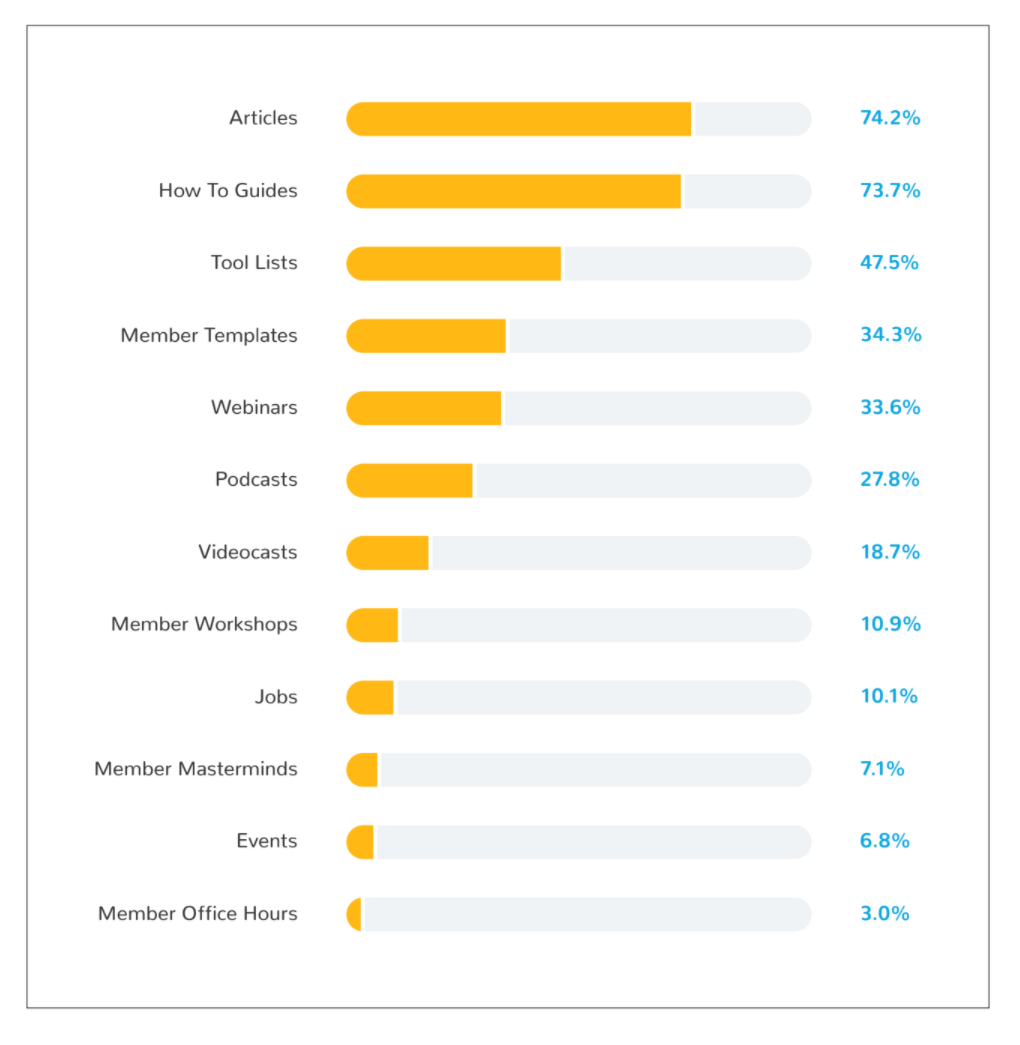
Our content by content type most valued by our community.
When asked about the single best thing we do, respondents picked the following answers:
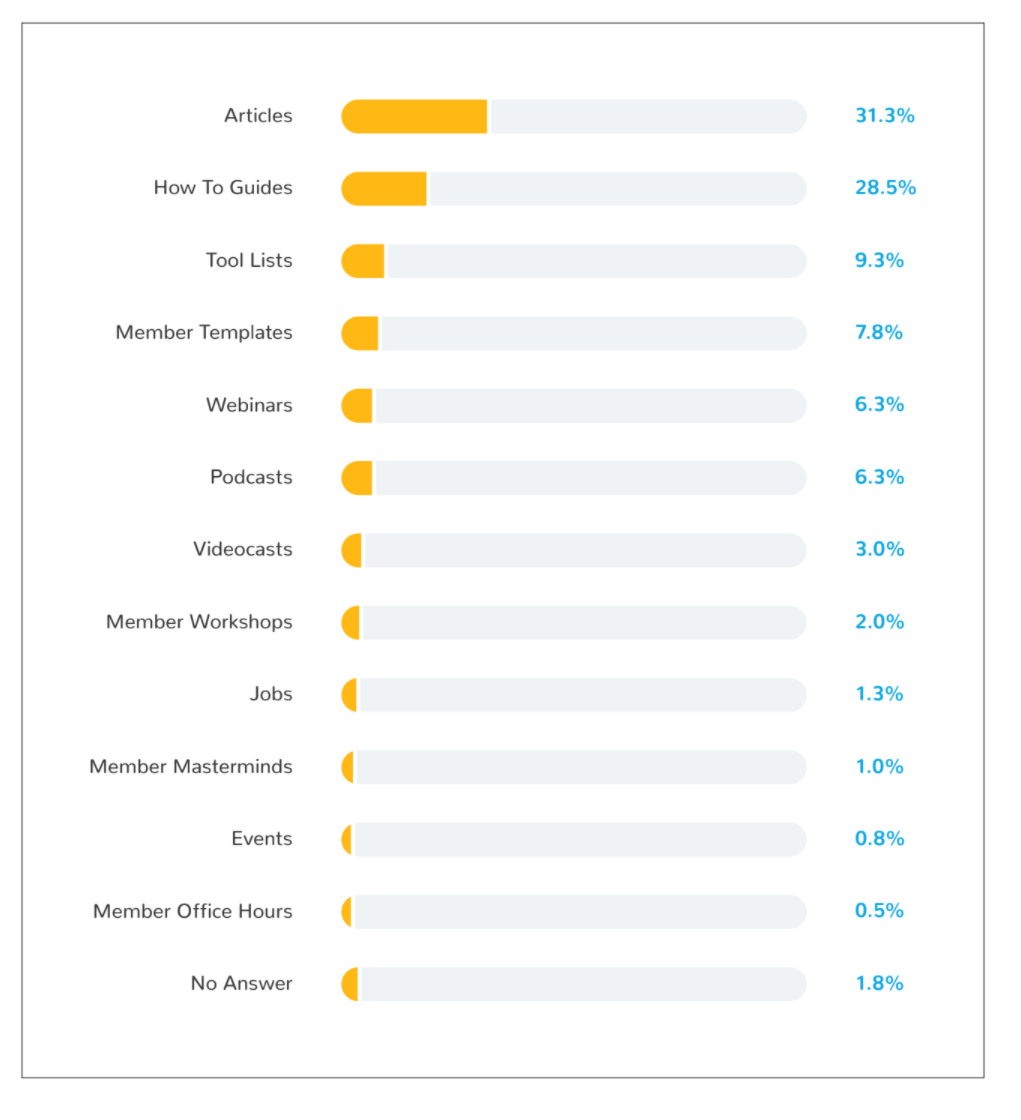
The single best thing we do, according to our community.
We don’t blame them — it can be hard to choose! If there’s something else that you think we’re missing, reach out and let us know!
About Our Respondents
This section will cover some basics about our respondents — things like where they are located, whether they’re in permanent or contract positions, specific job titles, experience levels, and more. The responses we received to these types of questions showed us the breadth and depth of the DPM community. While we can’t use it to make broad claims about project management in other places or locales, it does reveal a little bit about project management in places both inside and outside the bubble of North America that we inhabit here at the DPM.
Location
In this year’s first-ever DPM census, we received responses from project managers in 60 different countries.
These ones were the most represented:
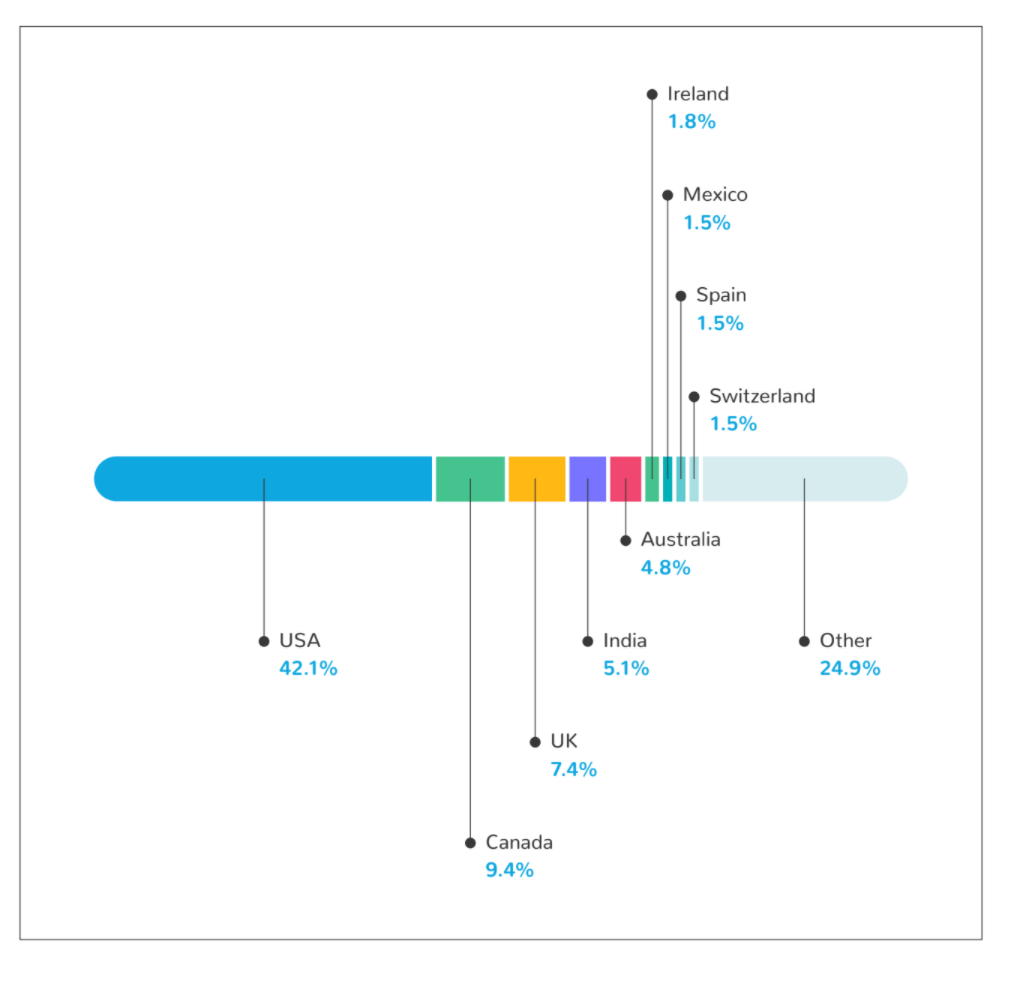
Census respondents by country.
Salary
While the survey did collect salary information from respondents, there wasn’t enough data to make any general statements about average salaries in the countries that our respondents stated they were from. However, we did factor the salary data received through our survey into our annual Project Manager Salary Guide for 2023, where we cover project management salaries in-depth and break down trends by country, role, and experience level.
Conditions of Work
The majority of respondents were permanent and on-site project managers.

Census respondents categorized by permanent employees, freelance project managers, onsite project managers, and remote project managers.
Job Titles
Respondents covered a variety of different titles and roles within project management. For those PMs that wear many hats, or for individuals in other fields taking on a PM role, we included an other option for respondents to write in their own title or role.
Here’s the breakdown by title:

Census respondents by job title.
Some of the highlights of the write-in answers for titles were Business Analyst, Engineering Manager, Head of Service Delivery, Marketing Manager, Product Manager, and my personal favourite, “Jack of All Trade[s]”, which is a pretty apt description of the project management role. There was quite the spread of responses in the “Other” job title category, which seems to reflect more workers in related or similar roles taking on project management responsibilities.
Experience and Confidence Levels
We also asked respondents about their relative experience level (in number of years) and their relative confidence levels (respondents chose from 3 statements based on which best described them.)
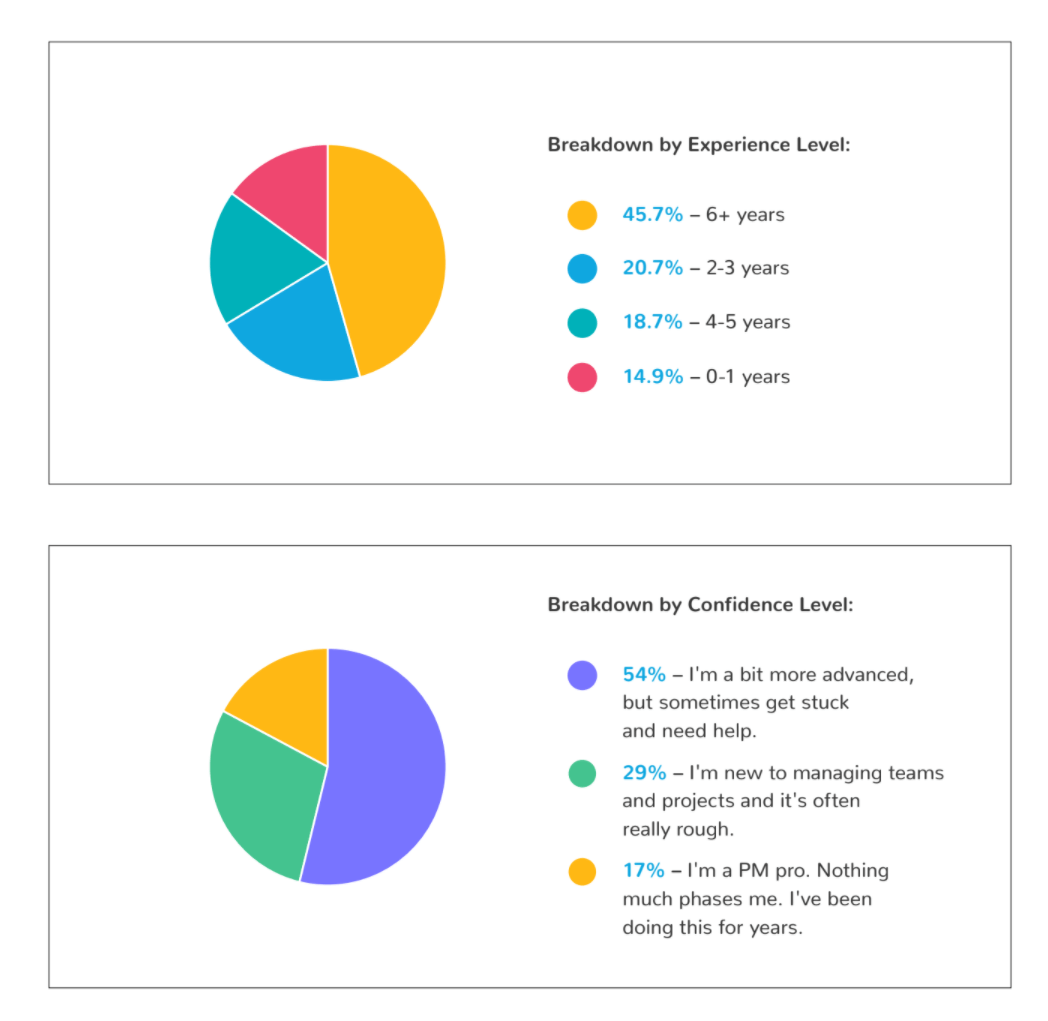
Census respondents by experience levels and confidence levels.
A few interesting notes about the overlap between experience level and confidence level.
The majority of respondents have 6+ years experience, but a majority also said they were more advanced rather than pros, which means many PMs with more than 6 years of experience don’t necessarily consider themselves pros. However, the majority of respondents that do consider themselves pros have 6+ years of experience.
In both the 2 to 3 years and 4 to 5 years categories, most respondents noted that they consider themselves advanced.
Interestingly, there are a few respondents in the 6+ years category that also stated that they considered themselves new to managing teams and projects. We have a few theories for these answers. It could be that these respondents are new to doing PM in their role but have been in their current role for 6+ years.
It’s also possible that they have another role or other responsibilities in addition to project management which doesn’t leave enough time to properly learn and conduct project management.
Experience and Budget Overlap
In order to find out about the distribution of project budgets, we asked respondents what the project budget they tend to work with most was. Below, you can see the results cross-referenced with the years of experience. Respondents were able to select more than one project budget that they typically work with.
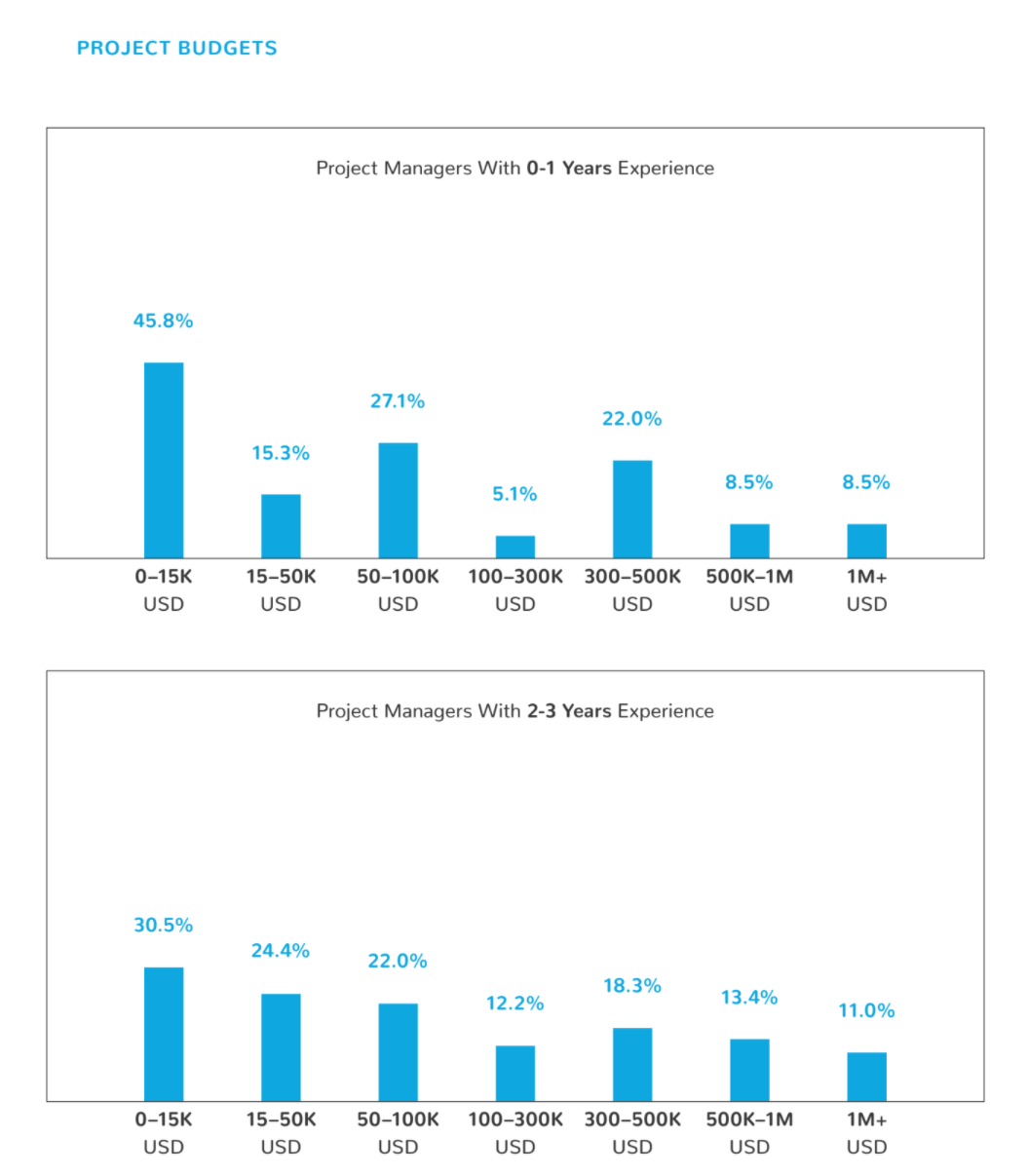

Average project budgets broken down by the experience levels of respondents working with those budgets.
Here are our observations.
Respondents with 0 to 1 years of experience were clearly on the lower end of the budget ranges, but there was also a high concentration of PMs with 0-1 years of experience in the $50 to $100k budget range. It could be that most projects, in general, are in this budget range, as other experience levels have a high percentage of projects in this range as well.
Respondents with 2 to 3 years of experience also tend to work with budgets in the lower ranges, such as $0-15k, $15-50k, and $50-100k. Those with 4 to 5 years of experience tend to deal with more mid-range budgets, such as $50-100k and $100-300k.
Finally, those with 6+ years of experience were dealing with more budgets in the higher end range of budgets, although they still had a large chunk of projects in the $50-100k range.
Organizational Information
We also asked participants what types of organizations and companies they work for. Here’s the breakdown by type and organization size. Organization type:

Respondents by the type of organization they work for.
Tools
Organizations are using more and more tools in their project processes. The average number of tools used by each organization is 2.47.
In using more tools, organizations are also spending more money on tools. Here’s the average amount of money organizations spend on tools per year.
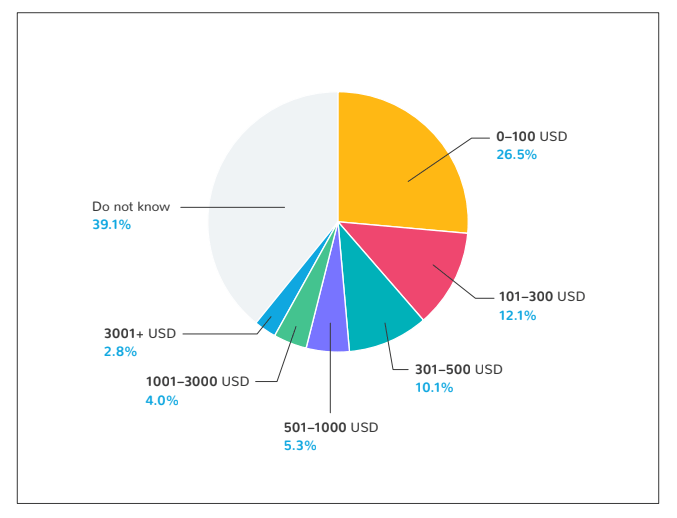
The average amount of money organizations spend on tools per year.
Conclusion
We hope you found this information as insightful and useful as we did. Thank you to all of our members and community members for participating — you’ve given us lots of great feedback that we will be implementing moving forward!
Stay tuned to join our census next year!

